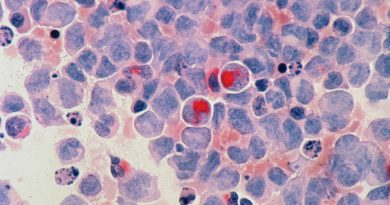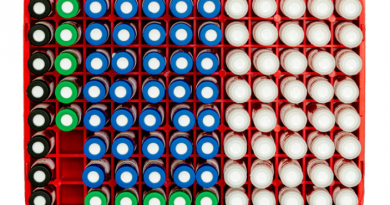Complying with Mandates for Manufacture of Sterile Products
Maintaining traceability in pharmaceutical manufacturing processes is of utmost importance in navigating the intricate landscape of government regulations that influence the design, development, production, and distribution of medications. The recent implementation of the EudraLex Volume 4 Annex 1 guidance, which pertains to the manufacturing of sterile medicinal products, serves as an exemplification of the good manufacturing practices (GMPs) that safeguard quality and safety. However, documenting these processes poses a significant challenge, as highlighted by Roberto Zerbi, the Global Life Sciences Business Development Manager at the leading industrial technology manufacturer Watlow.
The EudraLex Volume 4 Annex 1 guidance, which will come into effect in August 2023, illustrates how new regulations are introduced to grow trust in the pharma and life sciences businesses.
The utilization of sterilizers is essential in the production of injectable medicines, including vaccines. Both pharmaceutical companies and the machine builders who collaborate with them face the challenge of identifying the most efficient approach to comply with the data integrity principles governing the documentation of each heat sterilization cycle. Finding optimal solutions to meet these principles is crucial for ensuring the integrity and reliability of sterilization records in the pharmaceutical industry.
Point 8.50 of the EudraLex Volume 4 Annex 1 states:
“Each heat sterilization cycle should be recorded electronically or by hardcopy, using equipment with suitable accuracy and precision. The system should have safeguards and/or redundancy in its control and monitoring instrumentation to detect a cycle not conforming to the validated cycle parameter requirements and abort or fail this cycle (e.g., by the use of duplex/double probes connected to independent control and monitoring systems).”
Sterilization Control Challenges
When dealing with the challenges of heat and steam sterilization for monitoring and controlling activities, life sciences stakeholders and the OEMs supplying them with equipment are faced with multiple options for meeting the regulatory compliance mandate. But, they must always carefully balance the inherent trade-off between efficiency, cost, and time-to-market.
The new Annex 1 changes the status quo for OEMs and potentially introduces more machine building cost, time and risk. OEMs must qualify any new device added to their equipment and minimise downtime risks, as well as ensure staff is trained, expand their maintenance capabilities, and manage delays in time-to-market due to extended testing procedures.
The changes will also have implications for quality control managers who face the daunting task of navigating through extensive regulatory statutes. With new regulations being published and enforced continuously, it becomes challenging for managers to stay updated and effectively handle the vast amount of information. This is why it is critical for quality managers to have access to reliable solutions to stay up-to-date and ahead of validation inspectors.
Qualification and Validation
In the case of the new EudraLex regulation, the crux of the issue is the ability to document the positive completion of the sterilization process. This could be achieved through a separate monitoring system that provides the simplicity, robustness and accuracy expected by regulators. Organisations like Watlow, which designs and manufactures industrial technology for thermal applications, understand the impact of the new mandates on the sterilization process and are in a strong position to meet this challenge.
In partnership with Eurotherm, Watlow has developed a paperless sterilization quality management solution that combines industry regulatory knowledge with hardware and software components. This makes it easy for OEMs to integrate the new EudraLex Volume 4 Annex 1 requirement into their production machines. The solution comprises a best-in-class sensor connected to a redundant solution, which delivers the mandatory monitoring and recording required for compliance. It then digitally feeds the control system simultaneously achieving simplicity, robustness and an extremely high level of accuracy.
Monitoring sensors are the most critical device in the sterilization process. If the sensor fails, the sterilization batch has to be put on hold. OEMs must invest in a high-quality sensor, like that from Watlow, and enable the high-availability redundant monitoring solution to provide the environmental measurements to the control system.
Compliance is paramount when it comes to pharmaceutical manufacturing processes, but recording and monitoring critical process data can make life difficult for OEMs trying to keep up to date with constantly changing regulations. With the help of a reliable and robust paperless sterilization monitoring solution, OEMs can integrate the EudraLex requirements seamlessly to maintain quality and safety.
To learn more about Watlow, visit watlow.com, or to learn more about Eurotherm, visit eurotherm.com





